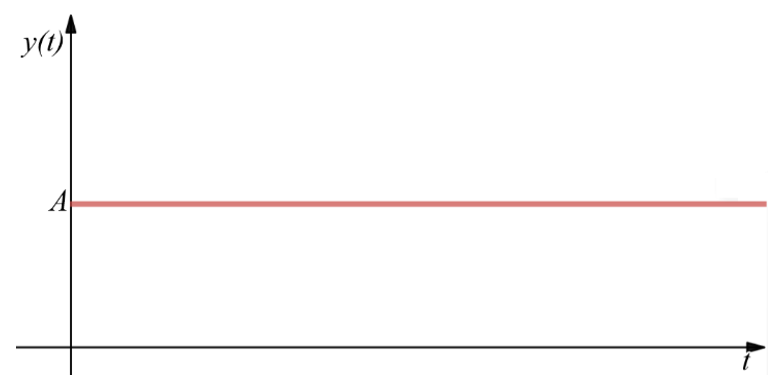Constant
Description of the Constant component in Schematic Editor, which outputs a constant signal.
Component icon

Description
The Constant component outputs a constant signal.
The Constant component can be represented by , where A is a constant scalar or vector.
Figure 2 illustrates the functionality of the Constant component for a scalar value of "A".

The dimension of the output signal will be the same as the length of the Value property.
The output signal type is determined by the Signal type property. If the value type does not match the Signal type property, the value will be converted. For example, if the Value is set to 2.7, and the int type is selected, the output will be 2. If the Valueis 5, and the uint type is selected, the output will be 0.
Ports
- Output (out)
- Constant signal output by the component
- Suported types: uint, int and real
- The output type is determined by the Signal type property.
- Vector support: yes
- The vector length is defined according to the Value property.
- Suported types: uint, int and real
- Constant signal output by the component
Properties
- Value
- Type in the value, or values, of the output signal. The property can be either a vector or a scalar.
- Signal type
- Select the type of the output signal. Supported signal types are real, int, and uint.
- Execution rate
- Type in the desired signal processing execution rate. This value must be compatible with other signal processing components of the same circuit: the value must be a multiple of the fastest execution rate in the circuit. There can be up to four different execution rates. To specify the execution rate, you can use either decimal (e.g. 0.001) or exponential values (e.g. 1e-3) in seconds. Alternatively, you can type in ‘inherit’ in which case the component will be assigned execution rate based on the execution rate of the components it is receiving input from.
- Tunable
Tunable is ignored in TyphoonSim and changing its value will not affect TyphoonSim simulation at all.
- Enables run-time tuning of the selected component. This will allow you to change values for value during simulation without the need to recompile the model. Tunable properties are available in HIL SCADA in Model Explorer.